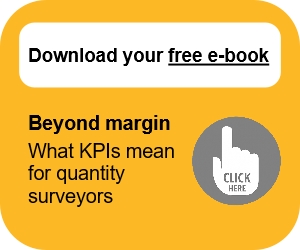Turnover in the construction industry
According to the Companies Act, turnover is:
‘The amount derived from the provisions of goods or services within the company’s ordinary activities after deduction of trade discounts, VAT and other relevant taxes’.
In general terms, turnover is the total amount that a business bills to its clients, less any discounts, VAT, and so on. It includes amounts such as the shipping that is required, and any expenses that are billed to the client.
It is important to remember that turnover is determined when the goods and services are actually provided, rather than when they have been invoiced or when the cash has been received. As income from investments such as interest and dividend income is not derived from the provision of goods and services, these are not included in turnover.
Turnover determines when a business has to register to pay Value Added Tax (VAT). VAT is a tax added to the cost of certain goods and services. It is only accountable where the party raising an invoice is VAT registered. It is necessary to register if VAT-able turnover exceeds a minimum threshold in any 12-month period.
[edit] Related articles on Designing Buildings
- Accounting.
- Business plan.
- Business rates.
- Cash flow.
- Commercial management.
- Compound Annual Growth Rate (CAGR).
- Construction VAT.
- Final account.
- Goods and services.
- Invoice.
- Key performance indicators .
- Price.
- Profit.
- Relevant cost.
- Revenue.
- Solvency.
- Stamp duty.
- Supply.
- Taxation.
- Whole life costs.
Featured articles and news
Amendment to the GB Energy Bill welcomed by ECA
Move prevents nationally-owned energy company from investing in solar panels produced by modern slavery.
Gregor Harvie argues that AI is state-sanctioned theft of IP.
Heat pumps, vehicle chargers and heating appliances must be sold with smart functionality.
Experimental AI housing target help for councils
Experimental AI could help councils meet housing targets by digitising records.
New-style degrees set for reformed ARB accreditation
Following the ARB Tomorrow's Architects competency outcomes for Architects.
BSRIA Occupant Wellbeing survey BOW
Occupant satisfaction and wellbeing tool inc. physical environment, indoor facilities, functionality and accessibility.
Preserving, waterproofing and decorating buildings.
Many resources for visitors aswell as new features for members.
Using technology to empower communities
The Community data platform; capturing the DNA of a place and fostering participation, for better design.
Heat pump and wind turbine sound calculations for PDRs
MCS publish updated sound calculation standards for permitted development installations.
Homes England creates largest housing-led site in the North
Successful, 34 hectare land acquisition with the residential allocation now completed.
Scottish apprenticeship training proposals
General support although better accountability and transparency is sought.
The history of building regulations
A story of belated action in response to crisis.
Moisture, fire safety and emerging trends in living walls
How wet is your wall?
Current policy explained and newly published consultation by the UK and Welsh Governments.
British architecture 1919–39. Book review.
Conservation of listed prefabs in Moseley.
Energy industry calls for urgent reform.

























